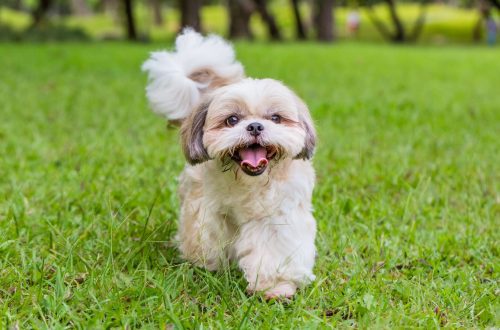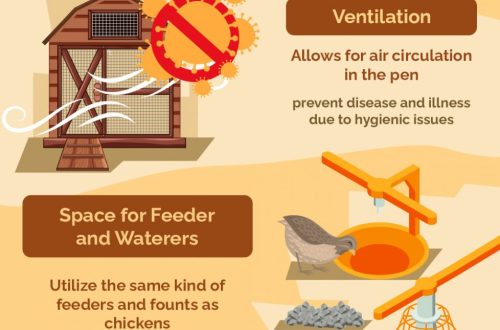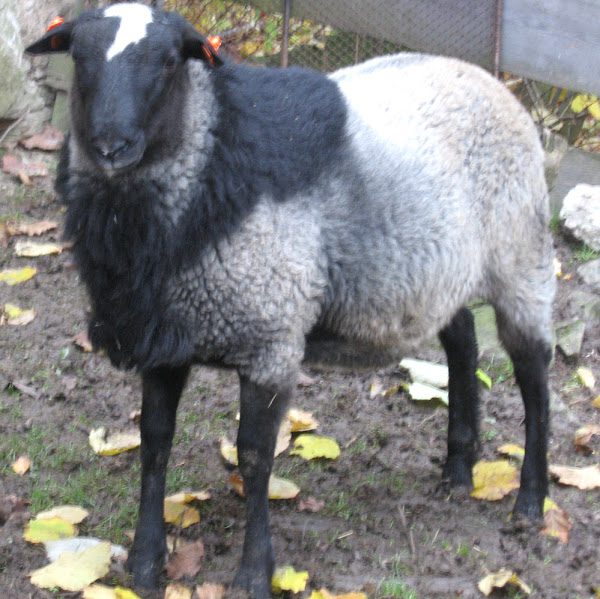
Sheep of the Romanov breed: history of appearance, advantages, disadvantages, breeding and feeding
Beautiful and warm clothes are relevant at all times. Both in ancient times and today, people strive to dress in such a way as not to freeze and, at the same time, look attractive. One of the warm natural fabrics that enjoy well-deserved popularity is wool.
It is used in two versions: woolen fabric and wool itself. The fabric is obtained from wool on a loom, and wool is given to people by domesticated sheep. Pure wool is used to warm the inside of clothes and shoes. The higher the quality of the wool, the more practical and attractive the final product will be.
Contents
History of the Romanov breed
In conditions of frequent cold weather, the relevance of obtaining natural wool is beyond doubt. Over the course of many decades, a breed of sheep was obtained by the method of folk selection, the most adapted in the conditions of the cold and scarce Non-Black Earth Region to the maximum productivity of wool of the required quantity and quality. This is a Romanov breed of meat-wool sheep, which gave people unpretentious and hardy animalscapable of producing a high number of young and high-quality wool on a small diet.
The name of the breed alludes to aristocracy, to being in demand in the upper stratum of society. In fact, the famous Romanov breed of sheep takes its name from the area where the first representative sheep was bred – the Romanovsky district of the Yaroslavl region.
Attractive qualities
Sheep of the Romanov breed are a reliable supplier of wool. This breed was bred more than 100 years ago in order to provide people with warm and beautiful clothes. Obtaining the wool of the Romanov breed of sheep is a profitable and therefore prosperous occupation. In addition to the production of sheepskin, the Romanov breed is also distinguished by good meat qualities.
Thanks to unpretentious and modest needs, combined with high productivity, the Romanov breed is one of the most famous and widespread.
Today, anyone can treat themselves to a quality product made of woven wool or insulated with it.
Sheep of the Romanov breed are one of the oldest representatives of modern domesticated sheep. Due to the physique and physiology adapted to difficult conditions, the Romanov breed perfectly tolerates keeping on an open pasture. Representatives of this breed are able to find food in the area where other animals grazed. This is due to the fact that individuals of the Romanov breed are able to eat a variety of plants. They always find something to enjoy.
Romanov breed does not require comfort, well tolerate hardships and difficult conditions of detention, have high endurance both in cold and in heat. Geographically, the breed is distributed in thirty regions of Russia, today representatives of the breed are also purchased for breeding in other countries of the Commonwealth and Europe.
Characteristics of the Romanov breed
Refers to the tailless sheep meat-wool breed.
Particularly valuable factors are:
- two-layer wool weighing up to 3,5 kg from one sheep;
- the weight of a female individual is up to 60 kg, the weight of an adult ram is 80 kg;
- fertility – up to 3 lambs in one pregnancy; the weight of a 6-month-old lamb reaches 45 kg.
External description of the sheep:
- short tail;
- common hornlessness in the female;
- the color of the coat is gray, the coat is dense, edged with black fringe, sometimes turning into a mane in males; medium-sized torso, belly slightly barrel-shaped; the head is oblong, located on a strong neck;
- the withers are wide; ears are long, parallel to the body; strong straight back slightly forward; wide and deep chest; medium length legs, stable and rigid.
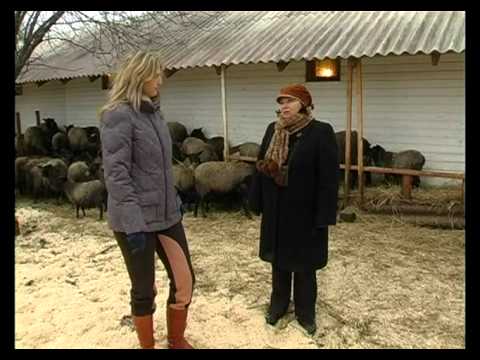

Watch this video on YouTube
Differences in subspecies
According to the constitution, sheep of the Romanov breed are distinguished in three subspecies:
- body is strong. Representatives of the subspecies most hardy and durable. Their sheepskin is of the highest quality. They are distinguished by a powerful torso, a wide chest, strong bones, but thin skin.
- rough body. Signs: heavy skeleton, coarse thick coat. The awn is large with a thick skin.
- delicate physique. In individuals of this subspecies poor physical shape, the awn of the wool is thin, the fleece is of poor quality. They cannot be used to increase livestock.
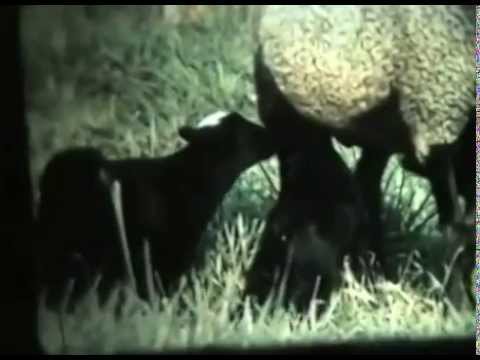

Watch this video on YouTube
Advantages and disadvantages of the breed
The advantages of the breed of the breed include:
- high quality blue-grey fleece with a unique steely sheen. Wool does not roll, fluff with awn correlates in the range of 4:1-10:1;
- year-round ability to conceive and give birth;
- pregnancy is usually multiple, on average 1:3, that is, three lambs per sheep. Some individuals can give birth to nine cubs at once;
- early puberty: the ability to insemination and pregnancy from 13 months. The fruit ripening period is one week less than in other breeds;
- the first haircut – five to six months, the resulting fleece gives a warm and light coat. Meat can be obtained at 7-9 months of age.
The disadvantages of the breed include:
- fearfulness;
- high sensitivity to weather changes, atmospheric changes, increased humidity, etc .;
- the likelihood of broncho-pulmonary diseases.
Feeding the Romanov breed of sheep
Romanovsky aboutVtsy reproduces excellently both in cold weather and in summer heat.
In two years, sheep are able to give birth three times. On average, a ewe has 3 offspring, which gives 9 lambs per period. The fruit to a full-fledged lamb ripens in 145 days. By 4 months, the lamb reaches sexual maturity. Primary mating is recommended when the weight of the ewe reaches 35-39 kg.
Stall content
During the stall keeping, the animal feeds on hay and straw. Necessarily include succulent foods and concentrates in the diet, which are added after drinking. Be sure to give nutrition rich in useful elements to lactating ewes and rams. The main food is roughage: hay, it is especially desirable to add hay from clover. Avoid adding acidic hay (sedge and rush), the animal can get sick, and death is also possible. The concentrate is added in the form of crushed oats and barley. The latter affects the development of the fatty layer. Young animals, pregnant and lactating ewes are supplemented with mineral feed.
Grazing in the pasture
When the winter stall period ends, the sheep are put out to pasture, but not immediately. Gradually, over 1-2 weeks, concentrates and hay are added to the feed. After preparation, the sheep is transferred completely to pasture forage. Quite suitable for feeding the vegetation of artificial pastures, but water meadows and wetlands should be avoided.
For greater productivity, sheep need to be given as much grazing space as possible. Throwing feed directly on the ground is not recommended, as the sheep will trample the feed. To feed the sheep it is necessary to equip feeders, which must necessarily contain juicy food all year round. Sheep likes to lie on a bed of hay or straw. Sawdust and peat are not suitable for the device.
Raising sheep for meat
Consumer habits are changing a lot. If earlier sheep meat was considered almost exotic, today lamb is increasingly appearing on the market. This is explained by the fact that sheep gives an environmentally friendly meat product. Animals are not grown on mega-farms and are not stuffed with chemicals.
Lamb holds a modest share in the meat business chart. This is only 2% of the total meat production. But it has a special status. Stimulants, antibiotics – all this is not in the diet of sheep. Among the 22 million Russian sheep, representatives of the Romanov breed also graze.
The main diet that the Romanov breed of sheep receives is free grazing. The volume of lamb production in Russia is 190 thousand tons per year. There is a little more than 1 kg per capita. Billions of rubles are allocated for the development of sheep and goat breeding. This is determined by the desire to double the consumption of organic lamb.
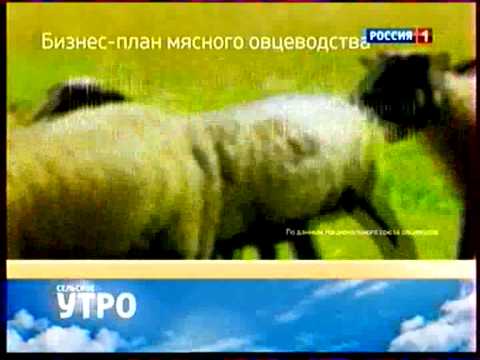

Watch this video on YouTube
Breeding issues and revival
Currently, the Romanov breed is much less common than before. Some experts believe that the Romanov breed of sheep has been reduced in number to almost complete extinction compared to the peak of its development, which occurred in the 1950s. At that time, there were a little less than 1 million individuals. By the beginning of the 800st century, the number had decreased to 21. In the main place of breeding – the Yaroslavl region, the Romanov breed was represented in the amount of only 16 thousand heads. The main reason for the decline in the number of Romanov sheep is the bankruptcy of small farms in the 5s and 90s.
The principle of stall keeping, which is so common in large farms, the total lack of places for grazing, weakened the breed. The decrease in resistance to the influence of external factors led to the fact that the sheep began to get sick faster and more often. The number of breeding individuals was reduced, at the same time profitability fell catastrophically. As mentioned above today there are government programsaimed at the revival of the meat industry. The Romanov breed of sheep also felt a qualitative and quantitative positive impact.








